Citroen DS - Divine inspiration - or from another planet?
Whether the Citroen DS took celestial inspiration or landed from another planet, it is one of the car world's greatest aesthetic achievements — and more. Car designer Peter Stevens, aesthete and commentator Stephen Bayley and Octane's own Glen Waddington discuss.
DIVINE by DESIGN
How the genius Goddess broke the moulds for both beauty and design
PETER STEVENS
For me there are two objects designed in the 1950s that stand out as other-worldly: the Lockheed SR71 Blackbird and Citroens DS. As part of his design brief for the highly secret supersonic Blackbird spy plane, its designer, Kelly Johnson, intended anyone seeing it would find it to be so unlike anything else flying at that time that they would be unable to describe it. Citroens problem was rather different and yet the outcome was similar.

Its Traction Avant range had been in production since 1934 and had changed very little in appearance. The performance and handling of the 11CV was still classleading but something new was needed. There were several attempts by Pierre Boulanger (Citroen boss), Andre Lefebvre (head of French research and design group Bureau d Etudes), and master stylist Flaminio Bertoni to update the Traction during the late 1940s, and in 1948 Boulanger authorised the start of the VGD project: ‘voiture a grande diffusion, a larger, faster car to take advantage of the new Routes Nationales.
‘Doesn’t construing driving as a gourmet experience seem a perfect explanation of Frenchness?’
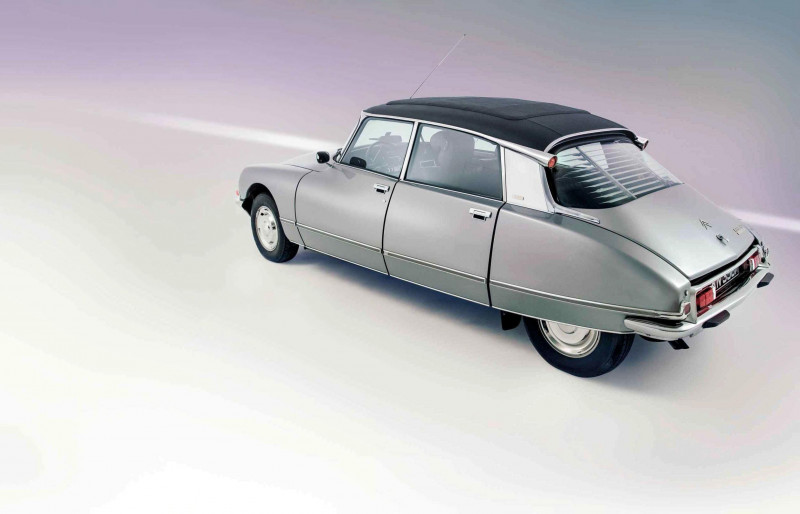
His cahier des charges to Lefebvre was actually considered conservative by the design team. But then, in 1950, Boulanger was killed in a road accident while driving a Traction, and his successor Robert Puiseux appointed Pierre Bercot as Directeur General and head of the VGD project. Bercot was convinced by Lefebvre that the project should be redefined, since there was the opportunity ‘to create a car that would be as far ahead of its contemporaries as the Traction had been in 1934’. This included functional aerodynamics for good performance and low fuel consumption, and the use of new materials to reduce maintenance and simplify body repairs. Lefebvre gave Bertoni two pencil sketches of what the VGD should look like. It should be as sleek as the latest jet aircraft,’ was his instruction.
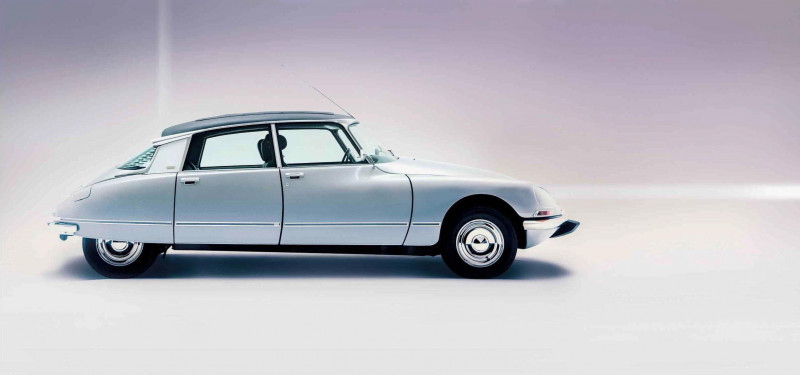
Flaminio Bertoni had been born in Italy, where he trained as a sculptor. He worked as a body designer for Carrozzeria Macchi (I am reluctant to use the term stylist’ for such a talent), before moving to Paris, where he worked for Rothschild et Fils and Sical. His work came to Citroen’s attention after he had designed a series of low-volume bodies based on Citroen C6 chassis for Sical in 1931. He was quickly offered a job by Citroen and by 1933 was working with Lefebvre on the radical Traction project.
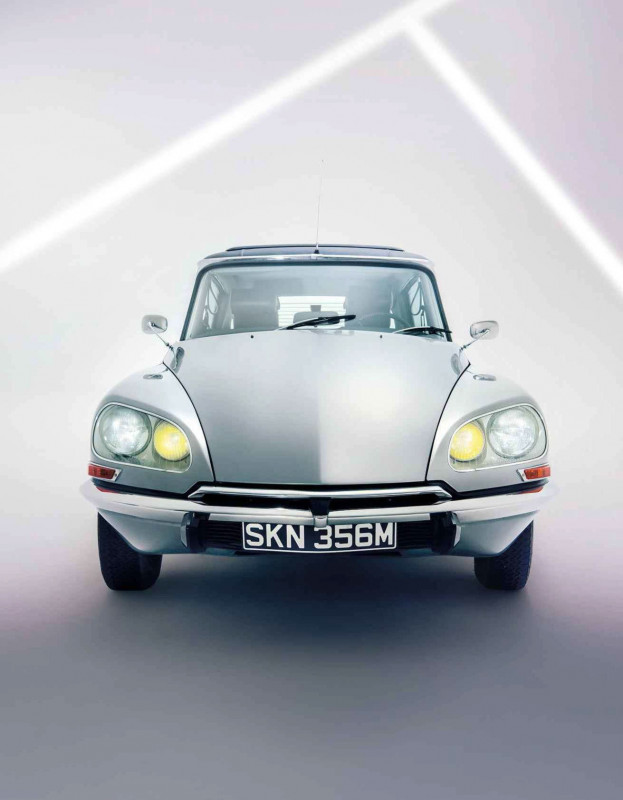
After a serious motorcycle accident in 1948, Bertoni recuperated by studying architecture, receiving his diploma in 1949. His earlier work for Citroen had included trying to make the original 2CV more acceptable to public taste, often enraging Boulanger by straying from his boss’s wish that the little car should be sober and functional. He later designed the body of the still-admired H van.
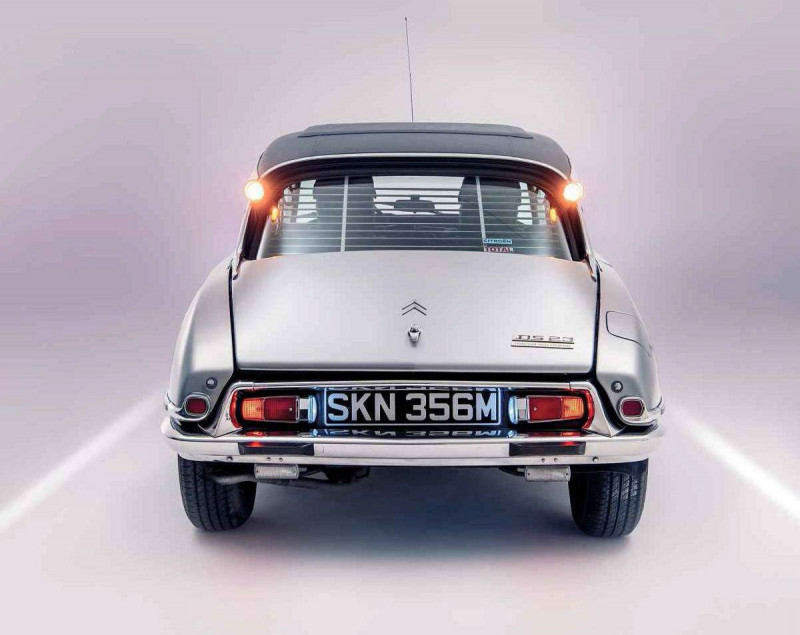
To a remarkable degree, Bertoni cleared his mind of the very practical nature of his previous Citroen work. And quite how he resisted being influenced too much by the prewar German extremists such as Kamm and Josef Ganz, Tatra in Czechoslovakia, or Gregoire and Carrosserie Pourtout in France is something that has always fascinated me. Bertoni was an accomplished sculptor, capable of creating his own scale models to a very high standard, and was given a free hand by his boss and collaborator Lefebvre, also a man of enormous creativity. Via a profusion of sketches and scale models he progressed and evolved his ideas.
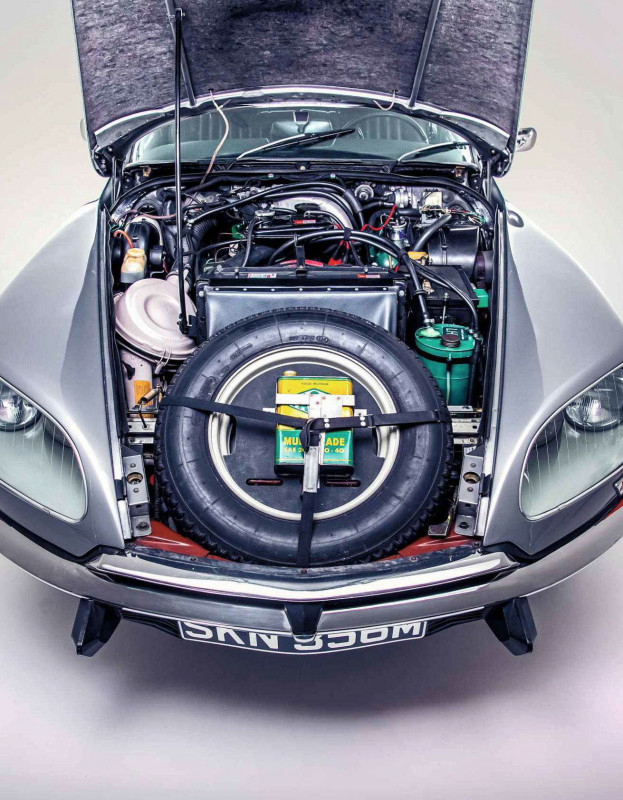
The radical appearance of the new car had a similar effect to that of Johnsons Blackbird. Prototypes of the DS (a homonym for Deesse, or Goddess) were tested in secret on the roads in the south of France, where Lefebvre had a holiday home near the remote village of Terrissole, and reports came back of strange-looking vehicles being driven at high speed, prompting lighthearted suggestions that they were transporting Martians on a reconnaissance tour.
‘The radical appearance of the new car had a similar effect to that of the Lockheed Blackbird spy plane’
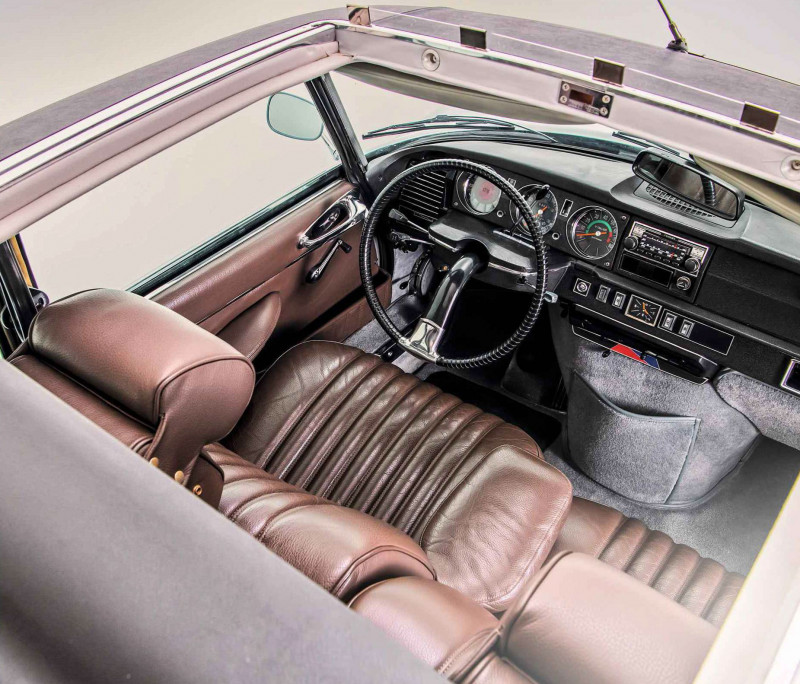
Yet, in early 1955, mere months before production began, Bertoni made some radical revisions to the form of the car. Because of the original specification proposing that all the body panels should be bolted to the chassis’ monocoque structure, it was possible to make changes without major revisions to the underpinnings. The very late decision to use the inline four-cylinder from the Traction (instead of the forward-mounted flat-six that Lefebvre had envisaged) meant that the engine could be repositioned behind the gearbox. That made space for a front-stowed spare wheel and radiator ducting below the front bumper pressing.
Bertoni had become convinced that the chosen outline of the car could make the DS look old-fashioned, like the contemporary Peugeot 203 and Ford Vedette. He therefore took the opportunity to change its roofline, both for more rear headroom and to modernise the side profile. With this change came the glorious roof-mounted rear indicators, set in chrome ‘trumpets’.

None of the exterior panels was load-bearing and Lefebvre believed that glassfibre was the material of the future. He had hoped that most of the outer panels could be produced in it, but ultimately only the roof panel was; when unpainted it would admit a wonderful soft light to the interior.
Bertoni had always claimed that he knew almost nothing about automobiles, either from the point of view of engineering or production. This cannot be true because the confidence with which he employed the shutlines to define each panel separation and integrated the bumpers into the overall form while keeping them as distinct components did not happen by chance.
There are two different schools of thought as to which model is the better-looking: the original Bertoni version or the Robert Opron facelift of 1967, with its flush headlight covers and revised bumper treatment. I think that the original 1955 model is the purest version: the lower body line is a simple convex curve running from front to rear, where the bottoms of the doors, in effect, act as the bottom of the body. The upper front fender line swoops rearwards as the mirror image of the lower line, while its forward curvature blends downwards into the simple round headlight unit. On the facelift car this line continues to rise as it tries to meet the twin headlight cover. The back corner of the rear wheel cover on the earliest cars is beautifully detailed with a smaller version of the indicator ‘trumpet’ housing the rear reflector; soon this lovely element was replaced by a dull square. As is so often the case, the facelift never looks as fresh as the original.
STEPHEN BAYLEY
Henri Recamier, who built what has become the global LVMH group, said that British luxury is masculine: Range Rover, guns and whisky. French luxury is more feminine: Champagne, Chanel and… let’s add the Citroen DS. Never mind the high-pressure oleo- pneumatic systems, this car is a temple to French values and can be understood as culture as much as engineering.
‘Luxury’ and its definitions are an obsession of the French. One of Matisse’s most famous paintings is called Luxe, Calme et Volupte. The architect Le Corbusier, inspired by mass production such that he named one building project Maison Citrohan (a deliberate corruption of ‘Citroen’), also designed furniture that was indulgent and expensive. His plushly upholstered Grand Confort armchair cannot be confused with a factory worker’s steel stool.
Coco Chanel said ‘Luxury is not the opposite of poverty, but the opposite of vulgarity.’ Karl Lagerfeld, who inherited her business, said luxury is intelligence. And here you have the DS, a gorgeously luxurious and sensationally beautiful car, intelligent too; exclusive because it was quite unlike anything else, but familiar everyday as well.
And seductively comfortable. Its gloriously wafty ride hypnotised passengers lost in the soft depth of its chairs.
There can never have been a better way to connect lunch in a good restaurant and dinner in another that is vaut le voyage than in a DS, floating along an empty Route Nationale. The experience gave extra meaning to ileflottante.
Culturally there are multiple sources for the DS. Flaminio Bertoni was marginally associated with the Italian Futurists who venerated speed and the beauty of machines, especially machine guns. He brought some of this crackpot sensibility to France. And French science fiction flourished in the 1950s. Despite the astonishing precedent of Jules Verne, early French sci-fi was derivative of Anglo-American norms, but after World War Two found its own voice. Publishers presented series called Le Rayon Fantastique and Presence du Futur.
Visions of things to come were dans le vent in 1955 when the prototype DS appeared at the 42eme Salon de 1’Automobile in Paris’s Grand Palais. That year, an SNCF train set a world speed record, Nabokov’s Lolita was published in French, Le Corbusier’s boggling chapel at Ronchamp was dedicated and, less positively, yet necessary to say, Pierre Levegh’s Mercedes-Benz 300 SLR had its murderous excursion at Le Mans.
But most important of all was the decision made by a young academic at the Centre National de Recherche Scientifique to visit the motor show. Roland Barthes had no special interest in cars. Instead, he was a sociologist and literary critic whose Degre Zero de I'Ecriture had been published two years before, causing a sensation at the Sorbonne.
In this book, Barthes wanted to get to the very essentials of what made something worth reading: degre zero might translate loosely as ‘bottom line’. And this pursuit he continued in his monthly contributions to the journal Les Lettres Nouvelles, where he applied principles of literary criticism to ordinary stuff: wrestling matches, or steak and chips, for example.
‘There can never have been a better way to connect lunch in a good restaurant and dinner in another that is vaut le voyage than in a DS’
His writing was luminous and illuminating, wry, drily humorous and original. And when one day Professor Barthes took the long walk from his Left Bank university to the Champs-Elysees, the result was one of the greatest essays on design ever written. Indeed, Roland Barthes on ‘The New Citroen’ established a level of elegant and intelligent scrutiny that few successors have been able to match.
In 1955 the DS was not yet in full production; a mere 69 were built. At the Salon, the example Barthes saw was mounted at a jaunty angle on a pylon with its wheels removed and voids filled in, the better to appreciate its astonishing sculpture. (The removal of the wheels seems peculiar because, at the time, Citroen was owned by Michelin). Here are some extracts from Barthes’ article, in French because they are so beautiful (the translation is my own). It was published in book form, along with his essay on Marilyn Monroe, in a collection called Mythologies in 1957. Reading them, you must imagine a wide-eyed scholar bemused and fascinated by the visual opulence that confronted him, a contrast to his sombre seminar room.
Je crois que I’automobile est lequivalent assez exact des grandes cathedrales gothiques: je veux dire une grande creation d'epoque, conque passionnement par des artistes inconnus, consommee dans son image, sinon dans son usage, par unpeuple entier qui s’approprie en elle un objetparfaitement magique.
‘Cars today are our cathedrals: I mean to say, a great creation of the age, passionately conceived by anonymous artisans, consumed in image, if not actually in use, by a population who see in it a perfectly magical object.’
H nefautpas oublier que I'objet est le meilleur messager de la surnature… La ‘Deesse’ a tous les caracteres dun de ces objets descendus dun autre universe… [and] de notre science-fiction.
‘Let’s not forget that design is the best messenger of a world superior to nature. The Goddess has all those features of an object from another universe, and of our science fiction.’
On sait que le lisse est toujours un attribut de la perfection… la tunique du Christ etait sans couture, comme les aeronefs de la science-fiction sont dun metal sans relais.
‘Everyone knows smoothness is an attribute of perfection. Christ’s robes were seamless, just as the airships of science fiction are made of sheer metallic surfaces.’
Jusqu a present, la voiture superlative tenaitplutot du bestiaire de la puissance; elle devient id a lafoisplus spirituelle etplus objective… la void plus menagere, mieux accordee a cette sublimation de I'utensilite que Ionretrouve dans nos arts menagers contemporains: le tableau de bord ressemble davantage a letabli dune cuisine moderne qua la centrale dune usine.
‘Up to now, the ultimate car was in the bestiary of power; now it has become more spiritual and object-like, and it is now more homely, more like the utensil you find in household goods. The dashboard is more like a modern kitchen than a factory.’
On passe visiblement dune alchimie de la vitesse a une gourmandise de la conduite.
‘We are obviously turning from the alchemy of speed to the act of driving as a gourmet experience.’
Writing about cars — indeed anything — does not get any better. And doesn’t construing driving as a gourmet experience seem a perfect explanation of Frenchness?
Roland Barthes died in 1980 when, returning from a big lunch with Francois Mitterand, he was run over by a laundry truck. It would be poetic if the vehicle involved had been Bertoni’s Citroen H van, but that must remain speculation, a myth as the professor would have had it.
Meanwhile, Le meilleur messager de la surnature: there is no better definition of design. And it was inspired by the Citroen DS, which is as timeless as Chanel and as glorious as Champagne. C’est tout.
GLEN WADDINGTON
Regrettably, I’m old enough to have been on this planet while the DS was still in production. Though only just In our house they were known as ‘Big Frogs’. To me, because that was what they brought to mind: something in the eyes, the resting stance and that broad-shouldered, skinny-tailed form. I shudder at the xenophobia of the Ford-driving generation above me, though in subsequent years even they have become serial Citroenists.
Anyway, enough childhood reminiscence. My point is that I have always favoured the later cars. They seemed surprisingly plentiful back then, and my less tutored eye prefers the smooth front end with the faired-in lamps (sorry Peter), perhaps inspired by the nose of the Panhard 24 — Panhard itself had begun its journey to becoming an outpost of the Citroen empire the same year the D S was launched.
That said, the original dashboard layout was a work of art; it became more conventional with each facelift, and from 1967 was a plain-looking black plastic affair. The radical single-spoke steering wheel remained throughout, however, and although it was wrapped in plastic on the final cars, the spoke itself was formed from the curved end of the steering column. What it commanded was even more radical.
At the heart of the DS, within its innovative monocoque sub-structure onto which the body panels were bolted, was a pioneering high-pressure oleo-pneumatic system, the fluid within its network of pipes held at a boggling 2490psi by an engine-driven pump. That fluid was the life-blood of the self-levelling suspension system, as well as providing the springing and damping media, and its pressure actuated both the braking system and rack-and-pinion steering, too.
It was developed in-house by engineer Paul Mages and had been tried out on the rear suspension of the final version of the preceding Traction Avant, the 15H, but the DS took things — well, everything — much further. While the Traction Avant had been the world’s first mass- produced front-wheel-drive monocoque (all of which the DS also boasted), after 21 years it gave way to a car that didn’t only look like science fiction but was spec’d that way too. It even came with inboard front disc brakes — the first mass-produced car to feature discs at all.
Only in its engine does it disappoint, with an overheadvalve four that dates back to the launch of the Traction Avant: a 1930s engine in a 1950s car that was still technologically and stylistically ahead of everything else in the 1970s — indeed, 1970 was the DS’s most successful year, one in which 103,633 were sold. Andre Lefebvre had hoped for an air-cooled flat-six, developed by Walter Becchia who’d originated the 2CV’s flat-twin, but financial pragmatism ruled. Andre Citroen himself had already overstretched the company while bringing the Traction to market, which landed it in the hands of Michelin.
The DS was deliberately a large, innovative and expensive car — 65% more expensive than the Traction Avant, so a cheaper, simpler, less powerful sibling was offered alongside: the ID (it reads in French as Idee, or ‘idea’), which went without power steering. Michelin treated Citroen as an automotive laboratory, its experiments providing an excellent basis for the mother company’s new radial tyres, advertising their qualities as a result. And so Michelin was happy for the 2CV and its derivatives to serve the mass market, while the DS pushed the envelope at the other end. It’s significant that there wasn’t a single mid-market Citroen launched until 1970, when the GS landed from a similar planet, also boasting that famous suspension system and — this time — its own, bespoke flat-four. The rare-groove Panhard 24 had been half-heartedly serving that purpose in the meantime.
Even the DS’s old engine isn’t without intrigue. It is, in effect, mid-mounted, lining up aft of the front axle (its tail-end bulges into the cabin under the dash) with the gearbox slung ahead of it. And while it kicked off at 1.9 litres, by the end it was a 2.3, with fuel injection and a five-speed manual gearbox. Something of a hot rod. But you should never think of any DS as such.
No other car drives like a DS, not even other Citroens. It defined the marque and, in the way we prefer to think of Citroen, it still does — nearly 50 years since it left us. And of those I’ve driven, my favourite is the Pallas with semi-automatic transmission: yet another convenience granted to us by that high-pressure pumped fluid. Driving with the very fingertips and toes is a DS pleasure.
Citroen’s expression of luxury is different from that of other marques, particularly the clubby wood ’n’ leather of, say, a Rover PS. Materials are relatively prosaic, typically vinyls and velours rather than the finest Connolly hides, but the seats are huge and softly embracing, while the carpeting on the floor has a deeply padded backing that feels utterly sumptuous. As does the other-worldly ride.
Urban pimples and heaving highways are dismissed. Yet it’s not only the softness that draws your attention but also the control, as damping is perfectly calibrated to match. So rather than feeling squashy and wallowy, like a 1970s water bed, the actions of superbly judged engineering impart a sensation of solidity and great refinement, quelling any surface harshness at source as those Routes Nationales float fleetly by on the other side of the glass. A uniquely fabulous expression of luxury.
Uniquely? There were subsequent generations of Citroen’s Hydropneumatic suspension, of course, first in the closely related SM (the 1970 coupe with a Maserati V6, after foolhardy Citroen took over the Italian marque), which trades a little plushness and feels curiously like water-skiing from behind the wheel. The CX, which replaced the DS in 1975, can suffer harshness over transverse corrugations, and while electronic control arrived with the 1989 XM, the 1995 Xantia Activa, with computer-controlled anti-roll technology, was surely its philosophical zenith before the system was cheapened and hobbled for good in the C5 from 2001.
As you might expect, the DS is not a car to be rushed. Push it and it will roll; best to preserve dignity and decorum, in which case you won’t stretch that wheezily humble four- cylinder, always better left unheard. But no matter that there’s a slightly bitter crumb in the recipe; every other ingredient adds so much to the overall flavour that you’ll barely notice.
I’m in danger of treading in Stephen’s gastronomic allegory, here. And while I’m not one to revel in religiosity, it is fair to say that la Deesse lives up to her name. Faithfully.
THANKS TO Piers Pickings (richbrook.co.uk) and Simon Lynes.
Conservative and elderly four-cylinder is front/mid-mounted and enlivened here by fuel injection; inner driving lights are directional, and move with the steering
TECHNICAL DATA 1974 Citroen DS23ie Pallas
- Engine 2347cc four-cylinder, OHV, electronic fuel injection
- Max Power 128bhp @ 5250rpm
- Max Torque 144lb ft @ 2500rpm
- Transmission Four-speed semi-automatic, front-wheel drive
- Steering Rack and pinion, hydraulically powered
- Suspension Front: twin leading arms, self-levelling
- oleo-pneumatic spring/damper units, anti-roll bar. Rear: trailing arms, self-levelling leo-pneumatic
- spring/damper units, anti-roll bar Brakes Inboard front discs, rear drums, hydraulically powered
- Weight 1337kg
- Top speed 117mph
- 0-62mph c13.0sec
RightMore Loren sophisticate than Mansfield siren, and from 1967 with a face by Robert Opron that defined Citroen for decades to come.
Clockwise, from right Seats super-soft, but post-1967 dash functional rather than stylish; foot-operated parking brake, lever adjusts suspension height; prominent 'stop' lamp necessary in such a complex car; just as comfortable to lounge in the back.
Right Perhaps nc other car in history has featured more glorified rear indicators than the DS: they are housed in chromed ‘trumpets’, at the corners of the roof.



And the winner is...
Sometime in the middle of Lockdown 16, Octane received a press release about the most googled cars during the restrictions brought on by the pandemic. Typically, it was the sort of thing a PR company pops out at 9am on a Monday morning for its client, before ticking the box and getting on with the next job; the sort of largely contrived, slightly circumspect and unsubstantiated email that may spark a bit of conversation in the office (though such a thing didn’t exist at that stage, obviously) and will then be promptly forgotten. Its chances of being reproduced at any length in any serious media were pretty much zilch.
But one detail stuck with me, and it was that the soaraway winner (if you could believe the data) was the Citroen DS. Way more popular among the googlers than the E-type, Ferrari 250 GTO, Miura and even the Mini. That doesn’t necessarily surprise me — I waste a lot of my own time browsing the DS on French classified site leboncoin, after all — but it did remind me how beloved they are, the sort of car for which you have such affection that you are genuinely pleased for other people owning them, even if you can’t have one yourself. Genuine event cars, despite that wheezy engine, cars that have something for everyone, whether it be their futuristic aesthetics or their design and engineering bravura.
If you want the utilitarian simplicity of the ID or the comparative luxury of the Pallas, there is a DS for all tastes, and the model range transcends class and car snobbery in a manner that only a small handful of cars, including 2CVs and Minis, truly can.
I recall that in a previous time of disruption — the Eyjaijallajokull volcanic ash cloud that grounded Europe’s planes in 2010 — stranded comedian Bill Bailey bought a DS in Aix-en-Provence and drove it back to the UK as an enthralled Twitter followed his adventure. I also recall a more recent argument over whether to call those delectable rear lights ‘trumpets’ or ‘chip cones’, and Team Chip Cones (me) losing.
But most of all I remember speculating in print a decade ago whether you could really call yourself a classic car enthusiast if you had never owned a DS. It is such an important car that it is our collective burden to share both the glory and the pain of ownership. It should be a public duty, like jury service. I haven’t yet been called, but I am sure I will be.